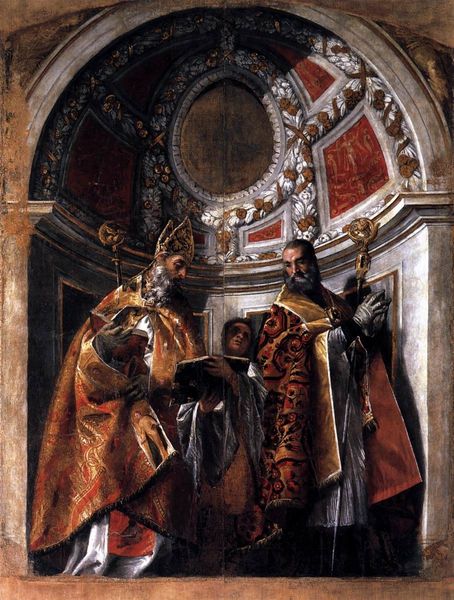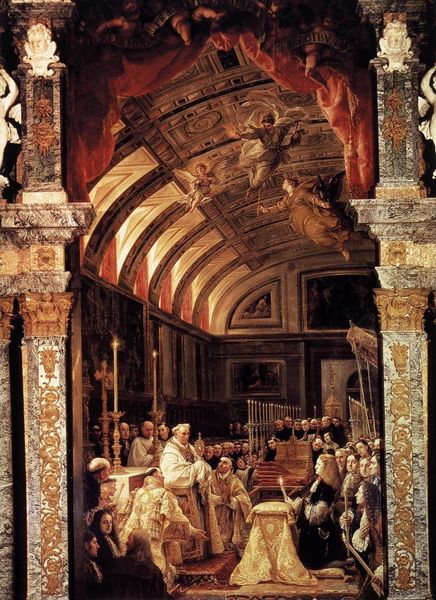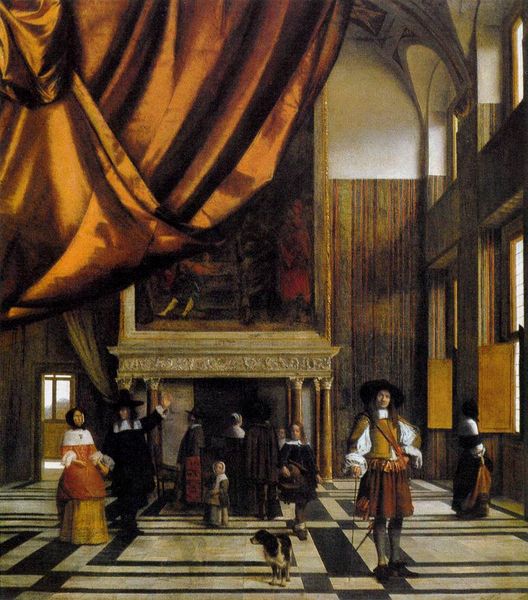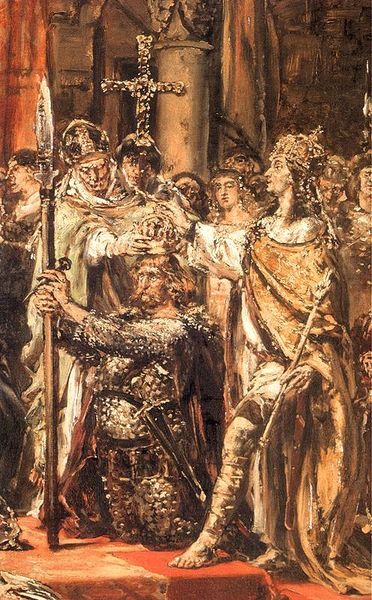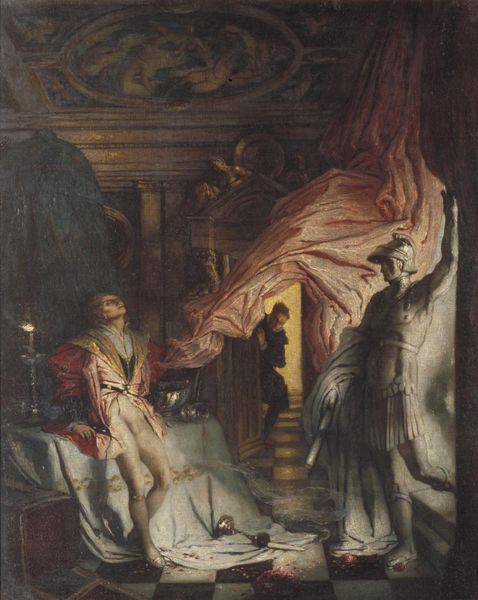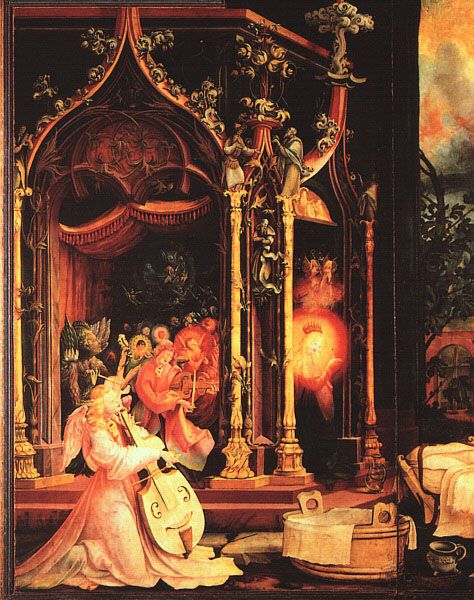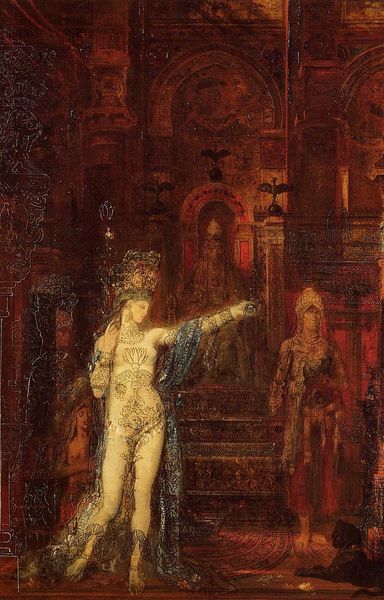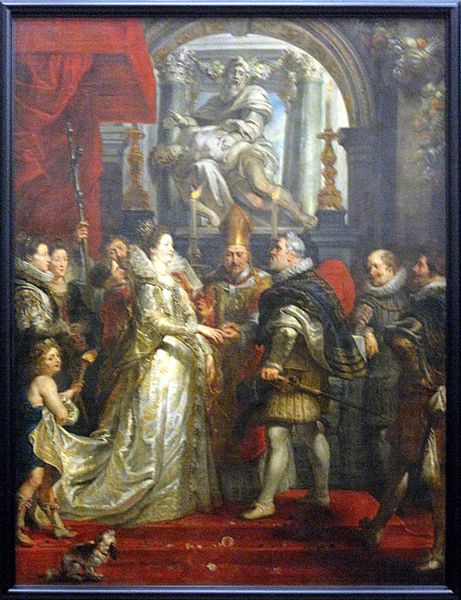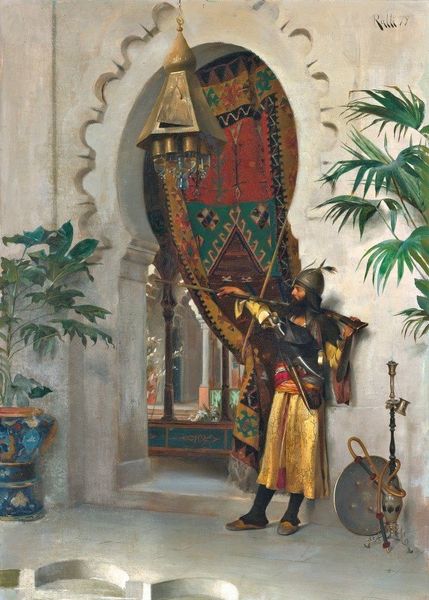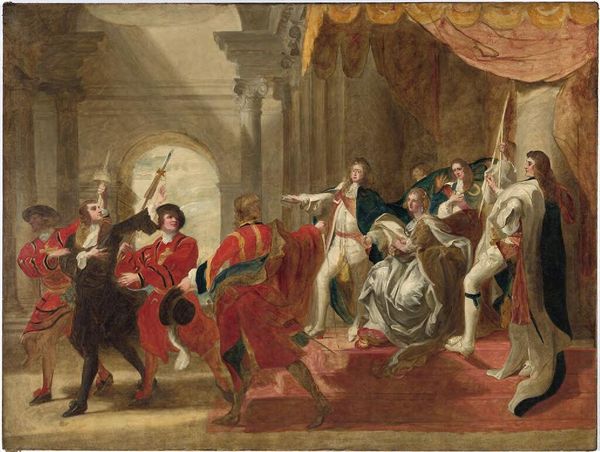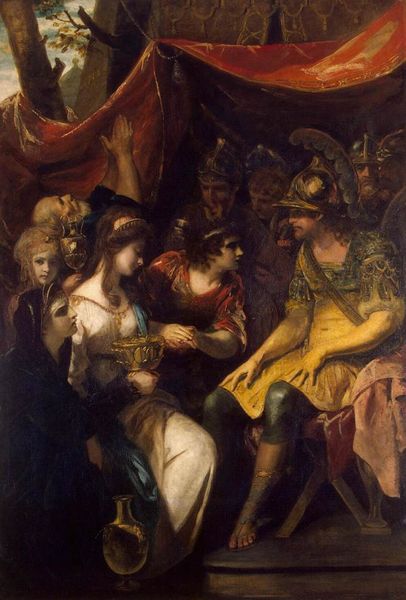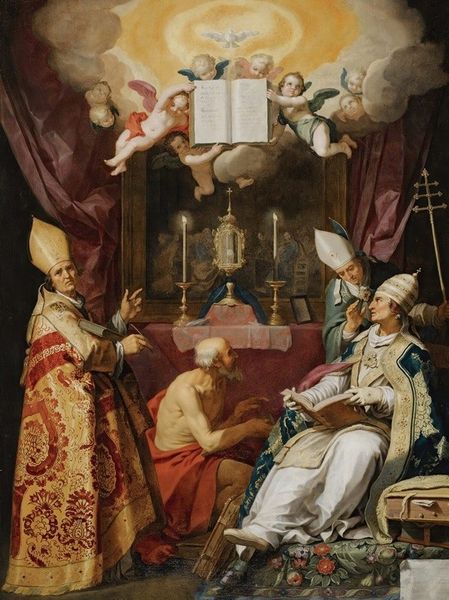
Copyright: Public domain
Curator: As you can see, the artwork before us is "Marshal Davout in the Chudovo Convent," a striking oil painting completed around 1900 by Vasily Vereshchagin. Editor: My first thought? Heavy. It’s as if the ornate frame of the doorway is pressing down, a golden cage. Even the red carpet can’t quite lift the gloom. Curator: Gloom is fitting. Vereshchagin often used war as a subject. He himself witnessed many conflicts, which deeply influenced his art, resulting in some poignant narrative scenes. He had, let's say, skin in the game, and it shows in the details of this artwork. Editor: Absolutely. It's interesting how Vereshchagin positions Davout within that gilded space; the formal architecture is at odds with the brutality the Marshal represents, wouldn’t you say? The soldier standing guard contrasts sharply with those blurry figures inside. He's sharply in focus while everything else just...melts away. Curator: Precisely. The artist masterfully uses these contrasting textures—the smooth formality of the guard and that loose painterly style within the arched space—to evoke emotional weight. Notice the cold detachment in the soldier's stare versus the business going on within. It pulls us in with such intriguing perspective and sharp contrasts. Editor: You've hit on something—I’m starting to sense it isn't just heavy; it's unsettling. All that detail, yet it feels…incomplete. Like we’re peering into a half-remembered nightmare. What Vereshchagin did was blend history and drama and in that, made an exceptional capture. Curator: Right? It's one of those works that leaves you with a lingering feeling, like a chord struck and left to vibrate. It definitely leaves a shadow with me, thinking about what happens in such locations. Editor: Yeah, what echoes it contains—very insightful work. Curator: I couldn't agree more, thanks.
Comments
No comments
Be the first to comment and join the conversation on the ultimate creative platform.
